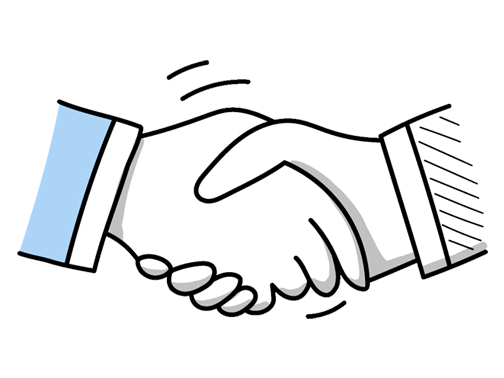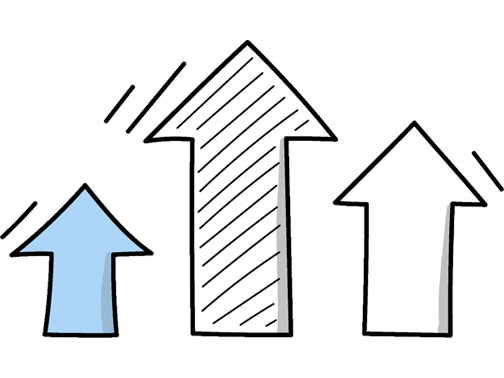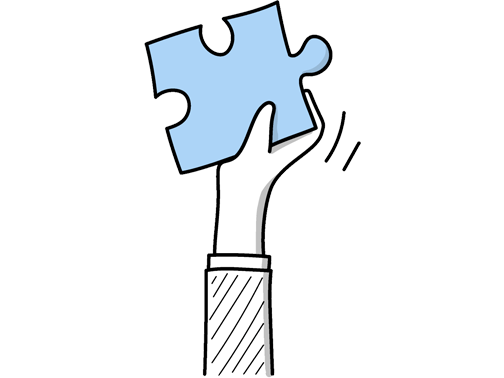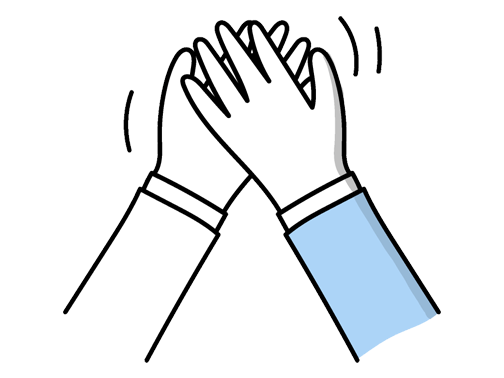IT Architect Interview Questions (2025 Guide)
Find out common IT Architect questions, how to answer, and tips for your next job interview
Practice Interviews Online - Identify your strengths and weakness in a realistic IT Architect mock interview, under 10 minutes
Practice Now »IT Architect Interview Questions
Interviewers want to see how you approach problems systematically and stay calm under pressure. You need to explain that you first gather information to identify the issue, then isolate the cause by checking system components step-by-step, and finally implement and verify a solution.
Example: When a system fails, I start by quickly understanding the scope and impact, then gather relevant logs and data to identify the root cause. I collaborate with the team to isolate the issue, testing hypotheses step-by-step. For example, once a critical service went down due to a configuration error, methodical checks helped us restore it swiftly while preventing recurrence. Clear communication throughout ensures everyone’s aligned and informed.
This interview question assesses your ability to respond flexibly to evolving project demands and manage complexity in architectural design. You need to explain how you recognized changing requirements, describe your collaborative approach to adapting the architecture, and highlight the positive impact and insights gained from the experience.
Example: In a recent project, midway through development, new compliance requirements emerged that impacted data handling. I worked closely with the team to reassess the design, introducing modular components to isolate sensitive data flows. This shift meant revisiting initial decisions, but it improved flexibility and security. The experience reinforced the importance of staying open to change and regularly reviewing architecture against evolving business needs.
Employers ask this question to see if you prioritize both growth and protection in your designs. You need to explain how you plan for increased demand while implementing strong security measures throughout the system.
Example: When designing architecture, I focus on building flexible frameworks that can grow with demand, often using modular components and cloud services for scalability. Security is integrated from the start—employing practices like least privilege access and continuous monitoring. For example, in a recent project, we layered identity management and automated threat detection, which helped maintain performance while protecting sensitive data as user numbers increased.
Interviewers ask this question to assess your ability to blend IT architecture with DevOps to enhance efficiency and business alignment. You need to explain how you design scalable, automated infrastructure using CI/CD tools, and how you ensure your architecture supports business goals by improving system agility.
Example: An IT architect in DevOps helps design systems that support seamless automation and continuous delivery, ensuring architecture adapts as teams iterate quickly. For example, by choosing scalable microservices and integrating them with CI/CD pipelines, the architect ensures both technical agility and alignment with business needs. This way, the architecture not only supports speed but also remains robust and scalable as demands evolve.
Interviewers ask this to see how you ensure your team stays capable and adaptable. You should explain that you evaluate skills through regular reviews and tailor development plans to each member's needs.
Example: I start by understanding each team member’s strengths and areas where they want to grow, often through regular one-to-ones. From there, I tailor development opportunities, like mentoring or project rotations, to challenge them appropriately. For example, I once paired a developer keen on cloud skills with a senior architect on a migration project, which boosted both confidence and capability while benefiting the team.
This question assesses your ability to balance technical expertise with stakeholder perspectives and demonstrates your communication and collaboration skills. You need to say that you listen carefully to understand their concerns, explain your technical vision clearly, and find common ground or compromises that meet both business and technical goals.
Example: When feedback doesn’t align with my technical vision, I listen carefully to understand the stakeholder’s perspective. Often, their concerns highlight priorities I might have overlooked. For example, in a previous project, a non-technical stakeholder’s input helped me adjust our approach to improve user experience without compromising architecture. It’s about blending expertise with collaboration to find the best solution together.
Hiring managers ask this question to assess your problem-solving skills and how you handle complexity under pressure. You need to clearly explain the problem, your step-by-step approach to analyze and resolve it, and the positive outcome of your solution.
Example: In a previous role, I faced a major system performance issue affecting user access. I started by gathering data and collaborating with cross-functional teams to pinpoint bottlenecks. We identified outdated infrastructure as the root cause, then redesigned parts of the architecture for better scalability. This hands-on, team-driven approach not only resolved the problem but also improved overall system resilience.
What they want to understand is how you ensure clear communication and transparency within your team to avoid delays and misunderstandings. You need to say you use regular meetings, status reports, and collaboration tools to provide consistent updates and encourage feedback.
Example: To keep the team updated, I rely on regular check-ins and clear communication channels like Slack or Teams. I also share concise status reports highlighting key milestones and any risks. For example, in my last project, weekly stand-ups and a shared dashboard helped everyone stay aligned and proactive without overwhelming them with details. This balance keeps the team informed and engaged throughout the project lifecycle.
Interviewers ask this to see how you balance innovation with stability in IT systems. You need to say that you assess compatibility, scalability, and security risks before planning a phased implementation to minimize disruption.
Example: When integrating new technologies, I start by understanding the current infrastructure and identifying gaps or opportunities. Then, I evaluate how the new tech aligns with business goals and its impact on existing systems. I collaborate with teams to plan a smooth rollout, often running pilot tests to catch issues early. For example, when introducing cloud services at my last role, this approach ensured minimal disruption and steady adoption.
Questions like this assess your practical knowledge of microservices and your ability to balance their advantages and difficulties. You need to describe your direct experience breaking down monoliths into microservices, highlight improvements like scalability and agility, and acknowledge challenges such as complexity and consistency, explaining how you managed them.
Example: In my experience designing microservices, I’ve focused on creating loosely coupled components that can be developed and deployed independently, which really helps with scaling specific parts of an application quickly. That said, coordinating data across services and managing the added complexity, especially around communication and fault tolerance, can be challenging. In one project, we improved performance significantly but had to invest heavily in monitoring and automation to keep things running smoothly.
Employers ask this to assess your practical knowledge and adaptability with cloud technologies. You need to clearly mention the platforms you've used, highlight specific projects or responsibilities, and briefly explain how you applied cloud architecture principles to solve real problems.
Example: I’ve worked extensively designing scalable cloud solutions, primarily with AWS and Azure. For example, I led a migration project moving legacy systems to AWS, improving reliability and cost-efficiency. I focus on building architectures that balance performance and security, tailoring solutions to business needs. While my main experience is with these platforms, I stay adaptable, always ready to explore new technologies that could benefit the organisation.
This interview question assesses your ability to handle interpersonal challenges and maintain team cohesion, which is vital for an IT architect leading complex projects. In your answer, briefly explain how you identified the conflict’s root cause, describe the steps you took to resolve it through communication and collaboration, and highlight the positive results and what you learned from the experience.
Example: In a previous role, two team members had differing views on a system design approach, which was slowing progress. I listened to both sides to understand their concerns, then facilitated a session where we aligned on shared goals and balanced their ideas. This helped us agree on a solution that met technical and business needs. The experience reinforced the value of open communication and finding common ground to move forward together.
Interviewers ask this to see if you can clearly convey ideas and collaborate with others to achieve goals. You need to explain a specific example where your communication helped resolve misunderstandings or align the team, leading to a better project result.
Example: In a recent project, early engagement with both technical teams and stakeholders helped clarify requirements and align expectations. By setting up regular check-ins and fostering open dialogue, we identified potential hurdles before they became issues. This transparent communication not only streamlined decision-making but also ensured everyone remained focused on shared goals, ultimately delivering the project on time and within budget.
Hiring managers ask this question to see if you can inspire collaboration and drive results in a technical environment. You need to say that you motivate by setting clear goals, fostering open communication, and recognizing individual strengths to lead the team effectively.
Example: I believe motivation begins with clear communication and understanding each team member’s strengths. I encourage collaboration by setting shared goals and celebrating small wins. For example, in a recent project, recognizing a colleague’s innovative solution boosted morale and inspired others. Leading by example and fostering an open environment where ideas flow naturally helps keep the team engaged and focused on delivering quality results.
This interview question aims to assess your skill in bridging the gap between technical and non-technical teams to ensure project alignment. In your answer, emphasize how you adapt your communication style to your audience, facilitate collaboration through regular meetings or workshops, and actively listen to feedback to promote mutual understanding.
Example: I focus on translating complex technical concepts into clear, relatable terms so everyone feels included. I’ve found that fostering open dialogue helps uncover concerns early, whether it’s a developer or a business lead. Regular check-ins and encouraging questions create a space where feedback flows both ways. For example, in my last project, this approach helped align teams quickly and avoid misunderstandings that could have delayed delivery.
This interview question aims to assess your leadership skills and ability to coordinate diverse expertise to achieve project goals. You need to explain how you communicate effectively and align team members from different functions to deliver successful outcomes.
Example: In my experience, leading cross-functional teams means fostering clear communication and shared goals across different skill sets. On a recent project, I coordinated developers, analysts, and business stakeholders by ensuring everyone understood the vision and their role. This approach helped us deliver the solution smoothly and on time, with collaboration driving innovation and problem-solving throughout the process.
This interview question aims to assess your problem-solving skills and ability to handle complex technical issues in architecture projects. You need to clearly describe the specific challenge, the strategic steps you took to overcome it, and the successful results your solution achieved.
Example: One of the toughest projects I worked on involved migrating a legacy system to the cloud under a tight deadline. The biggest hurdles were ensuring data integrity and coordinating between multiple teams. I established clear communication channels and phased the migration to minimize risk. This approach not only kept the project on track but also boosted team collaboration, resulting in a smooth transition with zero downtime.
Interviewers ask this question to assess your technical expertise, decision-making skills, and ability to collaborate on complex projects. You need to clearly describe the project's purpose, your architectural role, key decisions you made, and how you worked with others to overcome challenges.
Example: During a recent project, I led the design of a scalable cloud platform for a financial client. I focused on balancing security with performance, choosing microservices to enhance flexibility. Working closely with developers and business teams helped us address evolving requirements smoothly. This collaboration ensured the final architecture supported rapid deployment and met regulatory standards, ultimately improving system reliability and user experience.
Employers ask this to understand how you plan, monitor, and lead your team to deliver projects on time. You should explain setting clear timelines with milestones, using tools to track progress and risks, and fostering teamwork through open communication.
Example: To keep projects on track, I break down the work into manageable phases with clear checkpoints, so everyone knows what’s expected and when. I regularly review progress to spot any issues early and adjust plans as needed. Keeping the team motivated through open communication and recognising their efforts helps maintain momentum. For example, on a recent project, quick daily check-ins made it easier to solve blockers before they became delays.
Hiring managers ask this question to understand how you manage stress and ensure critical issues are resolved efficiently. You need to say that you assess the impact and urgency of each task, communicate with stakeholders, and focus on resolving the most critical problems first while keeping others informed.
Example: When multiple urgent issues arise, I quickly assess their impact on business operations and stakeholders. I focus first on what risks downtime or data loss. For example, if a network outage affects clients, that takes priority. At the same time, I communicate with the team to delegate tasks that can run in parallel, ensuring we tackle problems efficiently without losing sight of the bigger picture.
Hiring managers ask this to see if you can connect technical solutions to business goals. You need to say that you collaborate with stakeholders to understand business objectives and continuously validate the project’s progress against those goals.
Example: To ensure a project aligns with business strategy, I start by deeply understanding the company’s goals through discussions with key stakeholders. I then translate those goals into clear technical requirements and regularly check progress against them. For example, in a recent project, aligning IT solutions with customer experience objectives helped increase user satisfaction significantly, keeping both business and technical teams focused on shared outcomes throughout.
Employers ask this to see how you approach complex problems and whether you use systematic analysis rather than guesswork. You need to say that you gather data, ask clarifying questions, and use logical troubleshooting steps to identify the underlying issue before proposing solutions.
Example: When the root cause isn’t clear, I start by gathering as much information as possible from logs, users, and systems. I break down the problem into smaller parts and test each area methodically. Sometimes, discussing with colleagues offers fresh perspectives. For example, in a recent project, this approach helped identify a subtle network configuration issue that wasn’t obvious at first glance. It’s about patience and a structured mindset.
This question assesses your ability to communicate complex ideas clearly and bridge the gap between technical and non-technical stakeholders. You need to explain how you simplified the concept using relatable terms or analogies, ensuring understanding and engagement.
Example: In a recent project, I explained cloud migration to the finance team by comparing it to moving from a physical office to a virtual workspace. I focused on how their daily tasks would improve without diving into technical jargon, which helped them grasp the benefits and feel comfortable with the change. This approach made collaboration smoother and aligned expectations across the teams.
This interview question is asked to understand how you communicate, set realistic goals, and balance diverse interests. You need to say that you engage stakeholders early, clarify objectives, and maintain transparent, ongoing communication to align expectations.
Example: Managing stakeholder expectations starts with clear, honest communication from the outset. I make sure to understand their priorities and constraints, then set realistic goals together. Throughout the project, I keep everyone informed, addressing concerns early to avoid surprises. For example, when working on a recent cloud migration, regular updates helped align technical possibilities with business needs, ensuring everyone stayed on the same page.
What they want to understand is how you approach complex problems and innovate beyond standard solutions. You need to clearly describe a specific project where you identified a unique challenge and implemented a creative solution that delivered effective results.
Example: In a recent project, we faced challenges integrating legacy systems with modern cloud platforms. Instead of the usual approach, I proposed using a lightweight API layer that translated protocols in real-time. This not only saved time but also reduced costs significantly. It was a fresh perspective that helped the team meet tight deadlines without compromising on functionality or security.
Ace your next IT Architect interview with even more questions and answers
Common Interview Questions To Expect
The interviewer is looking for a brief overview of your professional background, skills, and experiences relevant to the IT Architect role. Focus on key achievements and qualifications.
Example: Sure! I have over 10 years of experience in IT architecture, specializing in designing and implementing complex systems for large organizations. I have a strong background in cloud computing, cybersecurity, and network infrastructure. My most recent project involved migrating a company's entire IT infrastructure to the cloud, resulting in increased efficiency and cost savings.
The interviewer is looking for insight into your decision-making process, your passion for the new career, and how your previous experience can benefit your current role. You can discuss your motivations, skills gained from your previous career, and how they align with your current career goals.
Example: I decided to change career paths because I wanted to pursue my passion for technology and problem-solving. My previous experience in project management gave me valuable skills in organization and communication that I can apply to my role as an IT Architect. I believe this change will allow me to further develop my technical expertise and contribute to innovative solutions in the IT industry.
Interviewees can answer by discussing a specific mistake, acknowledging responsibility, explaining how they rectified the situation, and highlighting lessons learned. Interviewers are looking for honesty, accountability, problem-solving skills, and the ability to learn from mistakes.
Example: Yes, I once made a mistake in a project where I overlooked a critical security vulnerability. I immediately took responsibility, informed my team, and worked with them to implement a solution to fix the issue. I learned the importance of thorough testing and double-checking my work to prevent similar mistakes in the future.
The interviewer is looking for insight into your personal drive and passion for your work. You can answer by discussing your career goals, values, or what inspires you in your field.
Example: What motivates me is the opportunity to solve complex problems and create innovative solutions in the IT field. I am driven by the challenge of constantly learning and adapting to new technologies, and the satisfaction of seeing my projects come to life. Ultimately, my passion for IT architecture and the impact it can have on businesses keeps me motivated every day.
The interviewer is looking for your level of interest in the company and the role, as well as your critical thinking skills. You can ask about company culture, team dynamics, or future projects.
Example: Yes, I was wondering about the company's approach to professional development opportunities for employees. Can you tell me more about the team I would be working with and how they collaborate on projects? Also, could you provide some insight into any upcoming IT projects the company has in the pipeline?
Company Research Tips
The company's official website is a treasure trove of information. Look for details about the company's history, mission, vision, and values. Pay special attention to the 'About Us', 'Our Team', and 'News' sections. The 'About Us' section will give you an overview of the company's operations and market position. The 'Our Team' section can provide insights into the leadership team and their backgrounds. The 'News' section can keep you updated on the company's latest developments and achievements.
Tip: Don't just skim through the website. Take notes and try to understand the company's culture, goals, and challenges. This will help you tailor your responses during the interview.
Social media platforms like LinkedIn, Twitter, and Facebook can provide valuable insights into the company's culture and values. They can also keep you updated on the company's latest news and developments. LinkedIn can provide information about the company's size, location, and employee roles. Twitter and Facebook can give you a sense of the company's voice and how it interacts with its customers.
Tip: Follow the company on these platforms and engage with their posts. This will not only keep you updated but also show your interest in the company.
Understanding the company's competitors can give you a broader view of the industry and the company's position within it. Look for news articles, reports, and analyses about the competitors. This can help you understand the company's strengths, weaknesses, opportunities, and threats.
Tip: Use this information to discuss how you can help the company overcome its challenges and leverage its opportunities during the interview.
The job description can provide valuable insights into what the company is looking for in an IT Architect. Look for specific skills, experiences, and qualifications mentioned in the job description. This can help you tailor your responses and highlight relevant experiences during the interview.
Tip: Use the job description as a guide to prepare for the interview. Highlight how your skills and experiences align with the job requirements.
What to wear to an IT Architect interview
- Dark-colored business suit
- White or light-colored dress shirt
- Conservative tie, avoid flashy patterns
- Polished dress shoes, preferably black
- Minimal and professional accessories
- Neat and clean grooming
- Avoid strong perfumes or colognes
- Carry a professional-looking bag or briefcase
- Bring a notepad and pen for notes
- Ensure clothes are ironed and fit well





